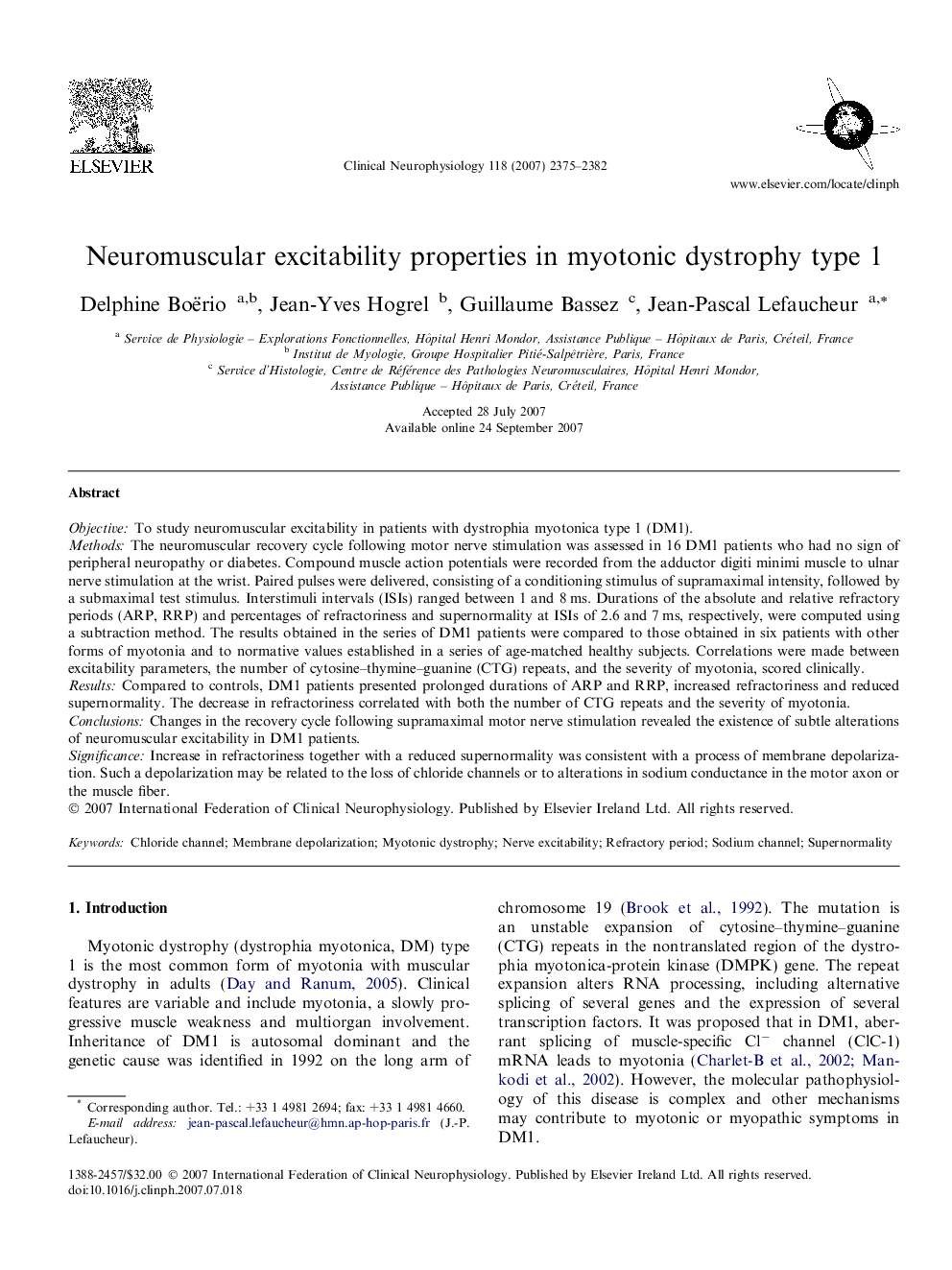| Article ID | Journal | Published Year | Pages | File Type |
|---|---|---|---|---|
| 3048201 | Clinical Neurophysiology | 2007 | 8 Pages |
ObjectiveTo study neuromuscular excitability in patients with dystrophia myotonica type 1 (DM1).MethodsThe neuromuscular recovery cycle following motor nerve stimulation was assessed in 16 DM1 patients who had no sign of peripheral neuropathy or diabetes. Compound muscle action potentials were recorded from the adductor digiti minimi muscle to ulnar nerve stimulation at the wrist. Paired pulses were delivered, consisting of a conditioning stimulus of supramaximal intensity, followed by a submaximal test stimulus. Interstimuli intervals (ISIs) ranged between 1 and 8 ms. Durations of the absolute and relative refractory periods (ARP, RRP) and percentages of refractoriness and supernormality at ISIs of 2.6 and 7 ms, respectively, were computed using a subtraction method. The results obtained in the series of DM1 patients were compared to those obtained in six patients with other forms of myotonia and to normative values established in a series of age-matched healthy subjects. Correlations were made between excitability parameters, the number of cytosine–thymine–guanine (CTG) repeats, and the severity of myotonia, scored clinically.ResultsCompared to controls, DM1 patients presented prolonged durations of ARP and RRP, increased refractoriness and reduced supernormality. The decrease in refractoriness correlated with both the number of CTG repeats and the severity of myotonia.ConclusionsChanges in the recovery cycle following supramaximal motor nerve stimulation revealed the existence of subtle alterations of neuromuscular excitability in DM1 patients.SignificanceIncrease in refractoriness together with a reduced supernormality was consistent with a process of membrane depolarization. Such a depolarization may be related to the loss of chloride channels or to alterations in sodium conductance in the motor axon or the muscle fiber.
